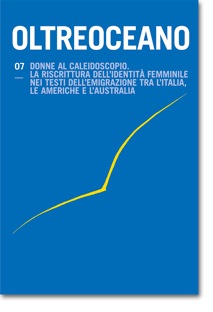Configuraciones y persistencia de lo femenino y del ‘matronazgo’ en el teatro de la Pampa Gringa argentina
Keywords:
emigración italiana, Pampa gringa, maternidadAbstract
La inmensa masa de inmigrantes que ingresó por oleadas a la Argentina operará cambios sustanciales en el esquema social autóctono (indio-hispánico) dando origen a un espacio socio-económico-cultural peculiar: la Pampa Gringa, donde la italianidad operó como un masivo sistema de resignificación y conformación de la actual sociedad donde se delinean un imaginario femenino autóctono y el culto a la maternidad, fruto de una idealización exacerbada de lo femenino y signo perviviente de una ancestral cultura originaria desde la figura de la Madre y su Matronazgo.
Configurations and Persistence of the Feminine and of Matronazgo in the Plays of the Pampa Gringa
The numerous immigrants reaching Argentina in huge waves introduced substantial changes in the indigenous social set-up (Indian- Hispanic), thus opening to a unique social-economical-cultural space: the Pampa Gringa. The Italian communities acted here as a consistent system of remodulation of society itself where a new autochthonous feminine vision and motherhood cult became almost exasperated, becomimg signs of an ancestral culture originated by the Mother figure and its Matronazgo.
Configurazioni e persistenza del femminile e del matronazgo nel teatro della Pampa Gringa argentina
L’immensa massa di immigrati entrati a ondate in Argentina avvia cambiamenti sostanziali nello schema sociale autoctono (indiano-ispanico), dando vita a uno spazio socio-economico-culturale peculiare: la Pampa Gringa. Qui l’italianità opera come massiccio sistema di re-significazione e conformazione della società attuale dove si delineano un immaginario femminile autoctono e il culto della maternità, frutto di un’idealizzazione esasperata del femminile e segno persistente di una cultura ancestrale originata dalla figura della Madre e del suo Matronazgo.
Downloads
References
Balbi, L. R. (1995): Continuidad de la gracia. Santa Fe: Subsecretaria de Cultura de la Provincia de Santa Fe.
Balbi, L. R. (1985): Adiós, adiós, Ludovica. Santa Fe: Subsecretaria de Cultura de la Provincia de Santa Fe.
Balbi, O. (2002-2003): El teatro de la gente, I-II. Santa Fe: UNL.
Butti, E. (1983, 31 de octubre): Balbi, el narrador. Entrevista de Enrique Butti para el Suplemento La comarca y el mundo. El Litoral.
Crolla, A. (2009): Viajes de indentidad/es es-trábicas en la memoria escrituraria italo-argentina. En S. Serafin (Ed.), Ecos italianos en Argentina. Emigraciones reales e intelectuales (pp. 21-36). Pasian di Prato: Campanotto.
Gregorio Gil, C. (1998): Migración femenina. Su impacto en las relaciones de género. Madrid: Narcea.
Kreig, R. (2012): ¿Quienáy? Inédito.
Mandoki, K. (2006): Prácticas estéticas e identidades sociales. México: Siglo XXI.
Sánchez, F. (1999): La gringa. Rosario: Ameghino.
Downloads
Published
How to Cite
Issue
Section
License

This work is licensed under a Creative Commons Attribution-NonCommercial-ShareAlike 4.0 International License.
The authors undertake to comply with the following conditions, which are considered accepted at the time of submission of their contributions.
The sending of a text implies that it is unpublished and not submitted to be published elsewhere.
1. If accepted, the author shall confer on the publisher the right to publish and distribute it both in paper form and in the online electronic edition. The published articles will be downloadable and made available in open access.
2. Provided that it correctly indicates that the first publication took place in the journal Oltreoceano. Rivista sulle migrazioni the author has the right to: a) reproduce the article in separate extracts or collected in a volume; b) publish the article on their personal website or teaching site provided that these sites are of a non-commercial nature; c) deposit the article in online archives of a non-commercial nature, linked to the institution they belong to or as part of projects for the non-commercial dissemination and open access of scientific works.
The use of contributions by third parties, for commercial or otherwise unauthorized purposes, is not allowed. The publisher declines all responsibility for the unauthorized use of the material published in the journal.












